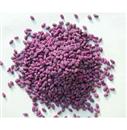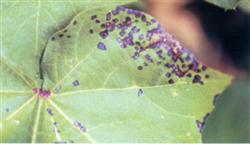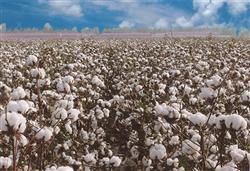Measures should be taken to prevent seedling disease from cotton sowing to seedling stage

There are more than ten kinds of cotton seedling diseases, such as blight, anthrax, quenching, root rot and so on, which are collectively called cotton seedling disease. The light ones grow slowly, wilt late, and the heavy ones lack seedlings and break ridges, die in pieces, and do great harm. After the incidence of cotton seedlings, although a series of disease prevention and treatment measures were taken, such as timely release of plastic film cotton, mid-ploughing near roots, spraying of sterilized pesticides and foliar fertilizer, etc., the final performance of cotton seedlings was still not satisfactory, which brought pressure to the management of seedling stage. The author believes that taking effective coping techniques before sowing to seedling stage is an effective measure to prevent the occurrence of seedling disease. The occurrence of cotton seedling disease is closely related to weather changes, geological conditions and incorrect man-made ways. The artificial factors such as the sudden attack of late spring cold, the bad weather of low temperature and low light, the diseased cotton fields with continuous cropping for many years and the large number of bacteria, incorrect selection of varieties, poor resistance, early sowing and poor quality of seed coating are all the main causes of cotton seedling disease. At the same time, it also has something to do with the incompatibility with the traditional cotton cultivation system. The first cold in late spring this year occurred on the day of the Beginning of Spring's solar terms on February 4. The minimum temperature was around 0 ℃, but in the early morning of February 5, the lowest temperature dropped to-9 ℃, and the rain, snow, haze and low temperature lasted for 10 days, which is rare in recent years. Although the late spring cold has no effect on the crops cultivated in the open field, it also gives us an alarm that there will be bad weather such as late spring cold, little rain, low temperature and humidity in March and April. Therefore, it is suggested that the majority of cotton farmers should face it with the mentality of "believing it rather than not believing it", take corresponding measures to prevent the serious occurrence of cotton seedling disease, and focus on the following five technical improvement measures. First, efforts should be made to popularize mid-maturing varieties with strong disease resistance, seedling disease resistance, high yield and good comprehensive shape, especially those with steady growth, outstanding disease resistance and strong late development in the early stage of planting, such as Nong Hua Shi Kang 126. Second, recognize the company brand and pay attention to the quality of seed coating agent to ensure that the whole seedling is free of seedling disease. At present, there are very few cotton farmers who plant cotton to keep their own seeds and coat themselves. most cotton farmers go to seed companies that they think are reputable to buy the varieties they trust and the latest promotion. There are also some cotton farmers who are cheap and save trouble to buy seeds from unknown sources in villages and lanes. The quality of these fake varieties and the quality of the coating agent are not guaranteed. The author suggests not to buy at will, which will affect your seedling growth and one-year harvest. Third, scientific formula, balanced fertilization, vigorously popularizing measures such as deep ploughing every other year, increasing organic fertilizer, gradually thickening the living soil layer, improving soil fertility, and adhering to the principle of fertilization in cotton fields, that is, the combination of nitrogen and phosphorus, the addition of potassium, and the heavy application of base fertilizer, highlight the popularization and application of slow-release and long-acting zinc-containing compound fertilizer, apply 40 kg of high-nitrogen, high-potassium, medium-phosphorus and zinc-containing compound fertilizer at the bottom of each mu as the premise, and then catch up with 15 kg of urea at the early flowering or full flowering stage. Spray foliar fertilizer with quality assurance from seedling stage to boll opening stage. 4. The early sowing date of cotton is the main factor leading to premature senescence of cotton and serious rotten bolls of spades in the later stage, and seedling disease is very easy to occur in the county. Therefore, it is suggested that the sowing time of plastic film cotton should be postponed appropriately. The normal year should be from April 22 to 30, and no later than May 5, gradually reversing the practice of early sowing time. Late sowing cotton fields should pay attention to timely release and seedling release. In order to prevent burning seedlings due to high temperature, cotton fields in the late seedling stage should pay attention to micro-control at seedling stage and prevent overgrowth. Fifth, strengthen the comprehensive prevention and control of diseases at seedling stage, adhere to multi-ploughing, increase the width of intertillage, close to plastic film, and increase soil permeability, and gradually deepen more than 10 cm in the middle of the row. Mid-tillage can promote the Lignification of cotton stem base as soon as possible, which is an effective measure to control seedling blight. In addition, the effect of 600 times liquid high-quality foliar fertilizer sprayed every 7 days on cotton growth can not be underestimated. The application of both is not only the number of times, but also the quality.
- Prev

Control of bacterial Corner spot in Cotton
First, agricultural measures. 1. Fine soil preparation, application of sufficient fertilizer, irrigation of soil moisture, and selection of disease-resistant varieties. 2. Reasonable crop rotation and deep winter irrigation to promote the decomposition of diseased and disabled bodies. 3. Strengthen mid-tillage at seedling stage, reduce soil moisture, apply less nitrogen fertilizer, increase phosphorus and potassium fertilizer, and cultivate strong seedlings. 4. Strengthen the management of cotton fields in time after rain.
- Next

Integrated Control techniques of Cotton Diseases and insect pests
Topdressing is an important measure for cotton to set more bolls, set large bolls, reduce shedding and increase cotton yield. However, if topdressing is not scientific, it will not achieve the desired effect, and sometimes there will be side effects. In production, cotton topdressing has the following four points. First, topdressing according to the law of fertilizer demand. Different growth stages of cotton, to fertilizer.
Related
- The first cup of black tea in spring, the flavor and history of tea gardens in Kenya, Africa
- The computer can not only choose potatoes, but also grow tea rice. AI will grow winter oolong tea champion.
- It is not only the inflated tea bitten by insects, but also engraved with the four seasons tea in Beipu.
- The Oriental Beauty Tea Festival in Zhuxian County takes the stage at the weekend to experience the plus-size feast of oil tea.
- & quot; Oriental Beauty Tea & Exploration of Emei in Hsinchu, the hometown of quot;
- The new variety of strawberry "Tainong 1" dessert is the first choice with mellow aroma. Crimson gorgeous
- History of Tea in Taiwan: from Wild Inner Mountain to Export Tea Garden
- Two types of Taiwan Oriental Beauty Black Tea won the British three-Star Award for Childhood Tea Xiang Zhang Jiaqi changed from pilot to champion tea maker.
- Banana species and varieties: the planting history of Taiwan Xianren banana and dwarf banana is long, is banana disease resistant?
- Coffee planting Technology: Qianjie Coffee from Seedling to harvesting

